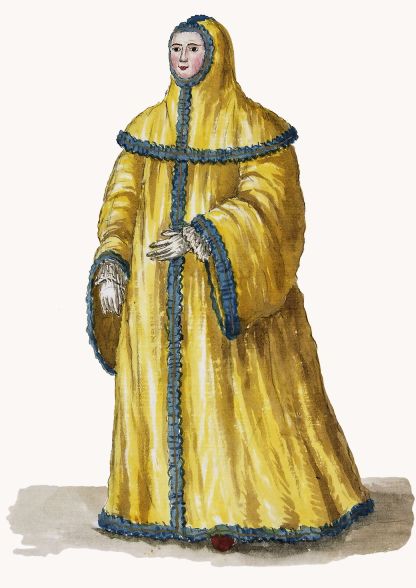

The use of this traditional Carnival outfit started in London to tease the way the people of the Anglican Church would dress.
It was prohibited in France because it would allow to completely be hidden underneath it, but was accepted in Italy, even in Rome (the Church!).
Women would use it too, as it would help to completely conceal their body. This was unusual, as normally woman weren't allowed (by the family) to go around with a disguise during Carnival time.
But it didn't catch up in Venice, too ordinary maybe, Venetian Carnival participants preferred the bauta.
